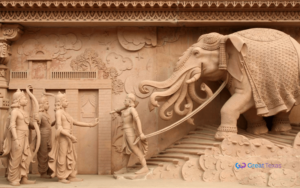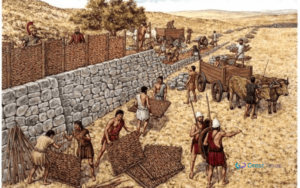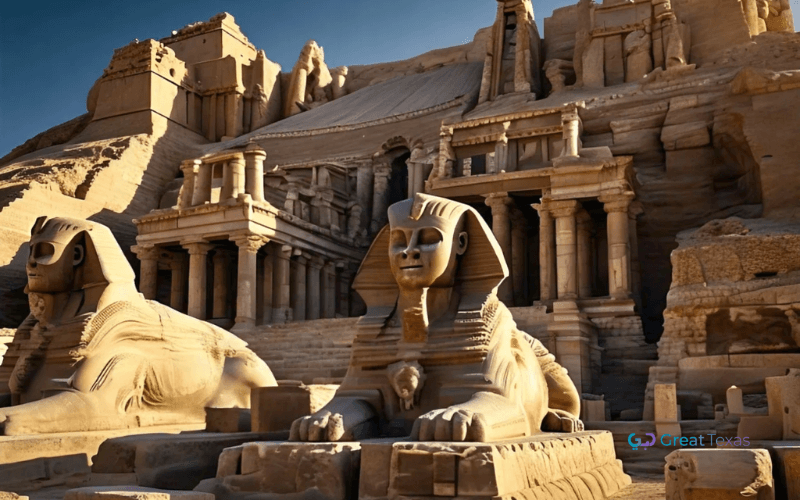Introduction to Ancient Artz
What is Ancient Artz?
Ancient Artz means art of antiquity – the works of art of the various ancient cultures. As far back as the Paleolithic generation where the creation of paintings on the wall of the caves was painting was an important feature. It depicted the ethos, worldview, and behavioral attributes of societies that in one way or another are long gone. They remain part of our cultural heritage to this present day and provide valuable information on how early people saw their environment.
Why is art crucial in ancient civilizations?
Art in the prehistoric era had different functions to perform including a means of narrating stories, and religious and political instruments among others. For instance, Egyptian ancients symbolized their art by painting the gods and the pharaohs to uphold their divine authority. Consequently, Greek art and Roman art played their roles for people of society regarding beauty myths and humanism. Some of these pieces were the true representation of the time and were also used to preserve knowledge from one generation to another.
Ancient World Invention and Development
Cave Sculptures
The number of years spanned, from the prehistoric man painting his cave to sculpting complex images of his gods depicts growth. The art dates back to the prehistoric age in which artists left paintings on the walls of caves and these include animals and human figures in Lascaux of France painted naturally. These paintings were probably created to be used in religious or ritual practices, thus providing the ancients with an opportunity to share their notions of the world.

Material and Instrument Employed
This checklist presents most of the materials ancient art used to execute their pieces of art. Typical materials used for sculptures were stone, clay, and bronze while the materials used for painting were extracted from plants and minerals. Stone or bone which were the earliest tools were considerably used to provide complex designs. These materials and tools evolved in terms of precision with which the artworks of the ancients could be made to add more complexities to them.
Art in Ancient Civilizations
Ancient Egyptian Art
The art of the ancient Egyptians is one of the most easily recognizable and influential ever known to the world. Instead, it was a style that depicted gods, pharaohs and mythical animals with a very high degree of symbolism. Color, shape, and layout all had their significance in the structure of the language used. For instance, while using colors to depict gods and deities the power of gold was assigned to them, and the size of the figure was used to depict power and superiority.
Greek and Roman Art
In Greek and Roman art there were advancements in realism and the human figure specifically in a perfect shape. This is evident more in major works of ancient Greek art such as the Discobolus where artists drew attention to the physical styling of the human model, specifically the muscles though more on relative sizes. Roman art developed this focus but also expanded on artistic portraits to see the client and authority, especially in emperors and kings.
Primitive Art Forms
Permanently Prehistoric
They are simple works as compared to modern-day paintings and are over 17,000 years old: Prehistoric cave paintings. Such pictographs as those in places like Laasneux and Altamira show images of the now extinct species like bison and horses. These images are thought to have had a sort of function, presumably linked with either hunting or spiritual purposes.
Role of Art Particularly Primitive
Art in the primitive culture was part of life and marked most human activities. These first adornments performed the purpose of modern-day advertisements, encyclopedias, diaries, tabloids, calendars, calendars as well as prayers. Based on the fact that these art forms had a ritualistic undertone, such works of art were not just for aesthetics but formed the backbone of a people’s spirituality and an interface to the environment.
Historic Art from Mesopotamia
The Ziggurat of Ur
As for the art of Ancient Mesopotamia, it was normally associated with religion and politics. The Ziggurat of Ur was a large stepped pyramid that was a major religious structure that held detailed sculptures and carvings. These artworks were not only done with the purpose of retaining the glory of the gods but also to rely on the richness of the rulers.
Political Significance
Sculptures in Sumerian states were a synchronized entity with religion as well as political schemes. Sumerian sculptures from important times, depicted gods and kingly figures to portray their divinity. These artworks were used as propaganda, especially in portraying the might of the rulers and their relations with gods. This practice was done through successive Mesopotamian empires contributing to giving birth to other classical art forms.
Ancient Chinese Art Timeless Tradition
Bronze Age to Terracotta Army
Chinese art has developed since the bronze age up to the Terracotta Army during the Qin dynasty. These life-sized terracotta statues were meant to guard the emperor in the afterlife and are some of the most outstanding artifacts of archaeological art ever discovered.
Chinese Calligraphy and Painting
Chinese art also enjoys calligraphy and brush paintings. These art forms are cursive and involve writing as well as images on a piece of paper. Chinese calligraphy is another art on its own; a form where each symbol is written with strokes and each symbol carries meaning as well as elegance.
Mayan and Aztec Art
Symbolism in Mesoamerican Art
Art work included artifacts of Mayan and Aztec Sad being found to depict religiosity, social class, and folklore. Some of the best-known are figures of Aztec men and gods, sculptured with excelled technique, and Mayan murals and paintings which were characterized by geometric MX drawings and brilliant colors.
Contemporary Culture
Mayan art trends are still being noticed to date with particular playing out in the architecture and designs that dominate the society today. The concept of symmetry, spirituality, and the relation to the natural world was called for by artists and designers all over the world.
Art in Ancient India:
Buddhist Art and Architecture
Relating culture: The prime images of Buddhism that were portrayed through art in Buddha’s life were his enlightenment moment along with the teachings. For instance, the Stupa was an architectural building type used by Buddhists as a shrine, but also as a hall for carving elaborate artwork.
Asserts Hindu Temple Art
This has made Hindu temple art famous due to the carving and constructions they make that they have a record of a variety of gods and demigods and another story. These artworks were used in religious rituals and represented high authority and protection beings.

Sacramental Activities of Ancient People
Religious Rituals
Objects associated with rituals including statues, altars, and ritual vessels had a special meaning. Such objects were made deliberately, and finely and indicated the gods or spirits. These objects had a very important function in the creation of links between the profane and the sacred.
Address the Gods
Art IF in many antique civilizations, it was used to address divine power. Fear and faith: Even when the gods were depicted in the sculptures or the paintings depicted divine events, through religious artifacts, people got to pray and make their deities favor them.
The Role of the Cult of the Ancients in the Modern World
How Does Art of the Ancients Affect Art of the Modern World?
We present an overview of the contemporary art world to reflect the presence of ancient art in the existence of modern artists. Greek and Roman styles as well as Egyptian are seen in sculpture, architecture and painting. In this paper, the author seeks to explain that the ancient techniques of proportion as well as realism and symbolism in arts serve as the basis of many art styles today.
Analysis of Artifacts in Modern World
Nowadays people especially scholars and conservators try to restore artifacts of ancient times. Significant work has been done towards embracing technology during the process of restoration of different artifacts to unlock critical information about past societies.
FAQs
How does Ancient Artz fit into the grand scheme of things?
Ancient Artz is one of the most vital markers of recorded man’s artistic ability and achieves this feat by portraying man’s past and marking the progression of different civilizations.
Which is the civilization credited with having shaped the art of the ancients?
As we all know the art history of different civilizations and especially sculpture are very important like Egyptian art, Greek art, and Roman art.
What type of media did the ancients use to produce art?
Prehistoric artists worked with stones, clays, woods, bronze, and paint and pigments for paints and carvings.
Ancient art In what way influence religious rituals?
It was a part of a religious cult: artists depicted deities, saints, and angels, as well as inspired the forms of the temples and the rituals.
Up to date, are there any ancient popular artworks that still exist today?
Yes, those are such masterpieces as the pyramids, the sculptures on the Parthenon, and the Terracotta Army that have not lost their historical and aesthetic appeal.








